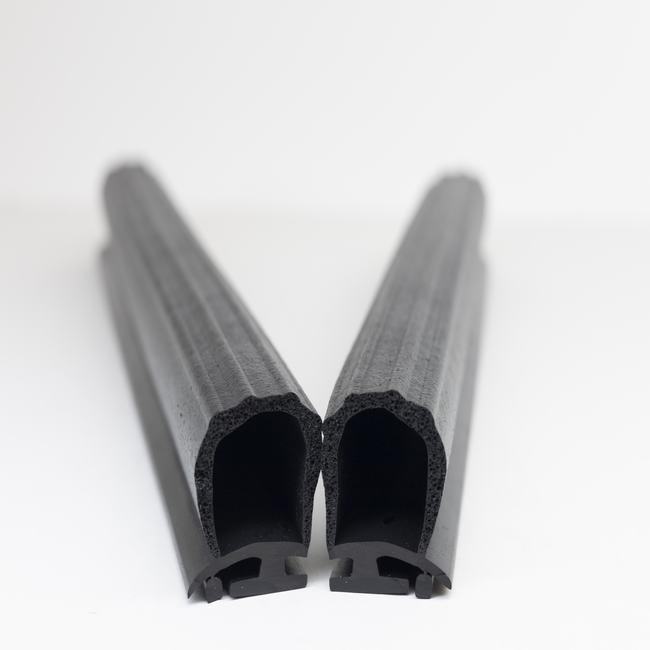Automatic door seals, also known as automatic door bottom seals or automatic door sweeps, are specialized mechanisms designed to create a tight seal at the bottom of a door automatically when the door is closed. These seals are commonly used in various commercial and residential applications to improve energy efficiency, soundproofing, and weather protection. Here’s a detailed description of automatic door seals:
Components and Functionality:
- Sealing Mechanism: The core component of an automatic door seal is the sealing mechanism. It typically consists of a retractable or adjustable seal (usually made of rubber or neoprene) attached to a metal or aluminum housing. When the door is closed, the seal mechanism is activated, either by the weight of the door or a mechanical linkage, causing the seal to lower and make contact with the threshold or floor.
- Housing: The housing of the automatic door seal is usually installed at the bottom of the door, either on the interior or exterior side. It houses the retractable seal and ensures smooth operation.
Key Characteristics:
- Energy Efficiency: Automatic door seals help improve energy efficiency by reducing drafts and preventing conditioned air from escaping. When the door is closed, the seal creates an airtight barrier, reducing heating and cooling losses.
- Soundproofing: These seals also contribute to soundproofing by blocking noise transmission through gaps under the door. This is particularly useful in commercial spaces, hotels, or homes located in noisy environments.
- Weather Protection: Automatic door seals are effective in preventing moisture, rain, snow, and dust from entering a building. They help maintain a clean and dry interior, especially in adverse weather conditions.
- Ease of Use: As the name suggests, these seals function automatically when the door is closed, requiring no manual adjustment. This convenience makes them user-friendly and ensures consistent sealing without human intervention.
- Durability: Automatic door seals are designed for durability and can withstand frequent use. The materials used, such as metal and rubber, are chosen for their longevity and resistance to wear and tear.
Applications:
Automatic door seals are commonly used in various settings, including:
- Commercial Buildings: They are widely used in commercial spaces, such as offices, retail stores, and restaurants, to maintain indoor climate control, reduce noise from busy streets, and enhance overall comfort.
- Hotels: Automatic door seals are often used in hotel guest rooms and common areas to provide a quiet and comfortable environment for guests.
- Hospitals: In healthcare facilities, these seals help maintain hygiene and control the transfer of airborne contaminants between different areas.
- Residential Buildings: Some homeowners choose to install automatic door seals for improved energy efficiency and soundproofing in their homes.
Installation and Maintenance:
Installation of automatic door seals typically requires attaching the housing to the bottom of the door and ensuring that it is properly aligned with the threshold or floor. Regular maintenance involves cleaning the seal and housing to remove dirt and debris and checking for any signs of wear or damage. Damaged seals should be replaced promptly to maintain their effectiveness.
In conclusion, automatic door seals are valuable components that provide energy efficiency, soundproofing, and weather protection in various settings. Their automatic operation and durability make them a practical choice for improving the performance and comfort of doors in both residential and commercial applications. Proper installation and maintenance are essential to maximize their benefits.










